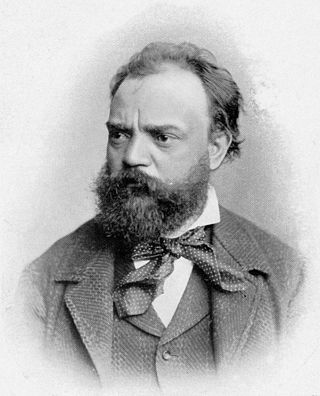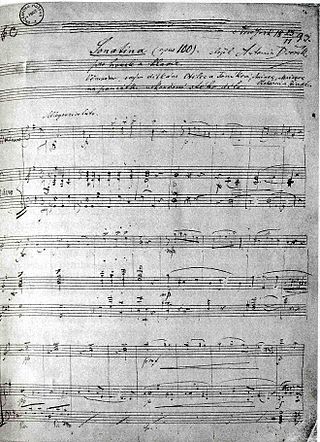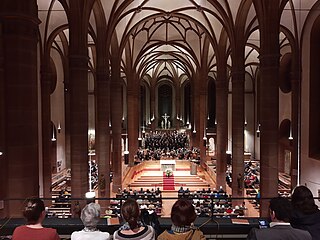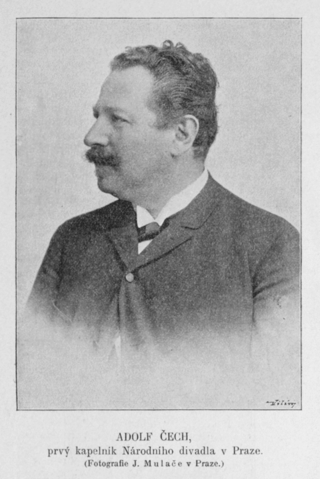
Antonín Leopold Dvořák was a Czech composer. Dvořák frequently employed rhythms and other aspects of the folk music of Moravia and his native Bohemia, following the Romantic-era nationalist example of his predecessor Bedřich Smetana. Dvořák's style has been described as "the fullest recreation of a national idiom with that of the symphonic tradition, absorbing folk influences and finding effective ways of using them."

The rondo is a musical form that contains a principal theme which alternates with one or more contrasting themes, generally called "episodes", but also occasionally referred to as "digressions" or "couplets". Some possible patterns include: ABACA, ABACAB, ABACBA, or ABACABA.
The mazurka is a Polish musical form based on stylised folk dances in triple meter, usually at a lively tempo, with character defined mostly by the prominent mazur's "strong accents unsystematically placed on the second or third beat". The mazurka, alongside the polka dance, became popular at the ballrooms and salons of Europe in the 19th century, particularly through the notable works by Frédéric Chopin. The mazurka and mazurek are often confused in Western literature as the same musical form.

Josef Suk was a Czech composer and violinist. He studied under Antonín Dvořák, whose daughter he married.

Antonín Dvořák composed his Symphony No. 6 in D major, Op. 60, B. 112, in 1880. It was premiered on 25 March 1881. It was originally published as Symphony No. 1 and is dedicated to Hans Richter, who was the conductor of the Vienna Philharmonic Orchestra. With a performance time of approximately 40 minutes, the four-movement piece was one of the first of Dvořák’s large symphonic works to draw international attention. In it, he manages to capture some of the Czech national style within a standard Germanic classical-romantic form.
Antonín Dvořák's Serenade for Strings in E major, Op. 22 (B. 52), is one of the composer's most popular orchestral works. It was composed in just two weeks in May 1875.
The Czech Suite in D major, Op. 39, was composed by Antonín Dvořák in 1879 and published later in his life. Adolf Čech conducted the premiere.

Dumka is a musical term introduced from the Ukrainian language, with cognates in other Slavic languages. The word dumka literally means "thought". Originally, it was the diminutive form of the Ukrainian term duma, pl. dumy, "a Slavic epic ballad … generally thoughtful or melancholic in character". Classical composers drew on the harmonic patterns in the folk music to inform their more formal classical compositions.

The Slavonic Dances are a series of 16 orchestral pieces composed by Antonín Dvořák in 1878 and 1886 and published in two sets as Op. 46 and Op. 72 respectively. Originally written for piano four hands, the Slavonic Dances were inspired by Johannes Brahms's own Hungarian Dances and were orchestrated at the request of Dvořák's publisher soon after composition. The pieces, lively and full of national character, were well received at the time and today are considered among the composer's most memorable works, occasionally making appearances in popular culture. “Contrary to what the title might suggest, the dances are not so much inspired by Slavic folk music generally, but specifically by styles and forms from Bohemia. In these pieces, Dvořák never actually quotes folk melodies, but evokes their style and spirit by using traditional rhythmic patterns and structures in keeping with traditional folk dances.”
The American Suite in A major, Op. 98b, B. 190, is an orchestral suite written in 1894–1895 by Czech composer Antonín Dvořák.

The Sonatina in G major for violin and piano, Op. 100, B. 183, was written by Antonín Dvořák between November 19 and December 3, 1893, in New York City. It was the last chamber composition he wrote during his sojourn in the United States. Dvořák catered the sonatina to the gradually developing musical abilities of his children, especially those of his 15-year-old daughter Otilie and 10-year-old son Toník, who played piano and violin respectively. In a letter to Fritz Simrock on January 2, 1894, Dvořák conceived the piece in the following terms: "It is intended for youths, but even grown-ups, adults, should be able to converse with it..." The sonatina was published by Simrock in Berlin in 1894. It also exists in a version for cello and piano.

The Piano Trio No. 4 in E minor, Op. 90, B. 166, is a composition by Antonín Dvořák for piano, violin and cello. It is among the composer's best-known works.
Antonín Dvořák's Piano Quintet No. 2 in A major Op. 81, B. 155, is a quintet for piano, 2 violins, viola, and cello. It was composed between August 18 and October 8, 1887, and was premiered in Prague on January 6, 1888. The quintet is acknowledged as one of the masterpieces in the form, along with those of Schumann, Brahms and Shostakovich.

František Ondříček was a Czech violinist and composer. He gave the first performance of the Violin Concerto by Antonín Dvořák, and his achievements were recognised by the rare award of honorary membership of the Philharmonic Society of London in 1891.
Antonín Dvořák wrote his String Quartet No. 10 in E♭ major, Op. 51 (B. 92), in 1879 at the request of Jean Becker, the leader of the Florentine Quartet. It is sometimes nicknamed the Slavonic Quartet. The quartet was dedicated to Jean Becker; it was first performed by the Joachim Quartet at a private chamber music evening on July 29, 1879, in Berlin. It was published by Simrock, Berlin, in 1879.
Antonín Dvořák´s String Sextet in A major, Op. 48, (B. 80) for two violins, two violas and two cellos was composed for the most part in May 1878. It was Dvořák's first work to be premiered outside Bohemia.

Antonín Dvořák's Stabat Mater, Op. 58 (B. 71), is an extended setting for vocal soloists, choir and orchestra of the 20 stanzas of the Stabat Mater sequence. Dvořák sketched the composition in 1876 and completed it in 1877. It has been characterized as a sacred cantata and as an oratorio, and consists of ten movements of which only the first and the last are thematically connected. Its total performance time is around 85 minutes.

Antonín Dvořák composed his cycle of four Romantic Pieces, Op. 75, B. 150,, for violin and piano in January 1887. These four pieces are arranged from his previous composition, a trio for two violins and viola, known as Miniatures, Op. 75a, B. 149.

Adolf Čech was a Czech conductor, who premiered a number of significant works by Antonín Dvořák, Bedřich Smetana, Zdeněk Fibich and other Czech composers. He also led the first performances outside Russia of two operas by Pyotr Ilyich Tchaikovsky and the Czech premieres of seven operettas by Jacques Offenbach. He was also a bass singer and a translator of opera librettos.
The Terzetto in C major, Op. 74 (B. 148), is a chamber work for two violins and viola by the Czech composer Antonín Dvořák, published in 1887.









